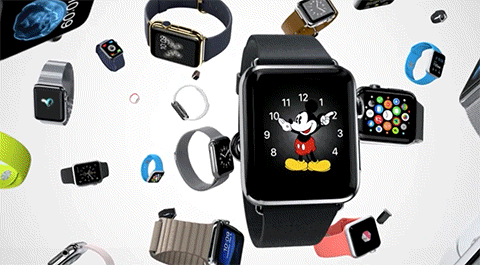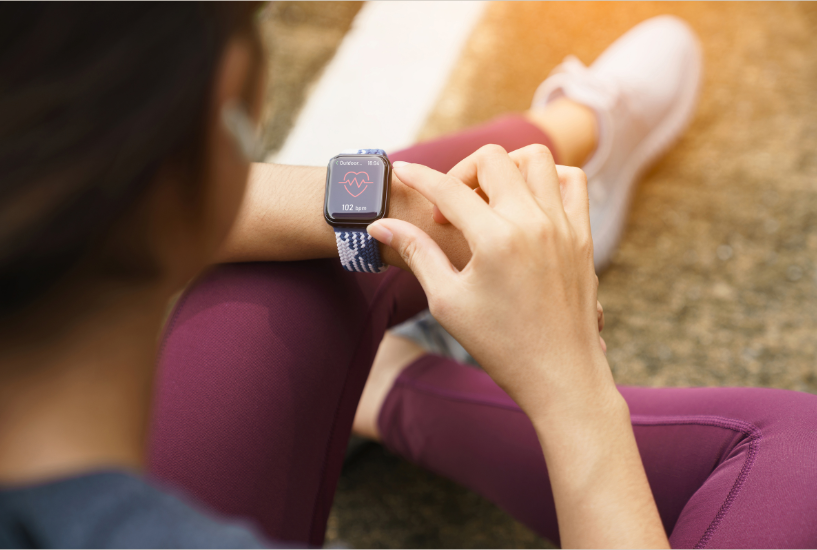In 2025, health tech wearables have transcended their origins as simple step counters to become indispensable tools for personal wellness.
These cutting-edge devices now monitor everything from sleep patterns to gut health, empowering users to take charge of their physical and mental well-being.
With advancements in AI, sensor technology, and design, wearables are no longer just gadgets—they’re lifestyle companions.
This blog goes deep into the world of health tech wearables, exploring current trends, their benefits, and the top devices shaping the market in 2025.
Whether you’re a fitness enthusiast or someone looking to optimize daily health, this guide has you covered.

What Are Health Tech Wearables?
Health tech wearables are smart devices worn on the body—typically as watches, rings, or patches—that track and analyze health metrics in real time.
Unlike traditional fitness trackers, today’s wearables integrate advanced sensors and algorithms to provide actionable insights. From heart rate variability (HRV) to blood oxygen levels, these devices offer a window into your body’s performance, often syncing data to apps for a seamless user experience.
The market for wearables has exploded, with a projected value of over $70 billion by 2025, according to Statista.
This growth reflects a broader cultural shift toward proactive health management, fueled by technology that’s both accessible and sophisticated.
Why Health Tech Wearables Matter in 2025
As we navigate an increasingly fast-paced world, health tech wearables provide a practical solution to monitor and improve well-being. Here’s why they’re more relevant than ever:
- Personalized Health Insights: Wearables use AI to tailor recommendations based on your unique data, like adjusting workout intensity or suggesting sleep tweaks.
- Preventive Care: Early detection of irregularities—like irregular heart rhythms—can prompt timely medical intervention.
- Mental Health Focus: Devices now track stress and mood, addressing the growing demand for holistic wellness tools.
- Integration with Healthcare: Many wearables sync with telehealth platforms, allowing doctors to monitor patients remotely.
In 2025, these devices aren’t just for tech-savvy gym-goers—they’re for anyone prioritizing health in a data-driven age.

Top Trends in Health Tech Wearables for 2025
The wearable tech landscape is evolving rapidly. Here are the key trends defining the industry this year:
1. Advanced Biometric Sensors
Modern wearables go beyond basic metrics. Devices now measure:
- Blood Glucose Levels: Non-invasive glucose monitoring is gaining traction, a game-changer for diabetics.
- Hydration Status: Sensors detect dehydration, alerting users to drink more water.
- Body Temperature: Real-time fever tracking aids in illness detection.
Companies like Apple and Fitbit are pioneering these innovations, pushing the boundaries of what wearables can do.
2. AI-Driven Insights
Artificial intelligence is the backbone of 2025’s wearables. AI analyzes patterns in your data to:
- Predict fatigue before it hits.
- Recommend personalized recovery plans.
- Flag potential health risks with uncanny accuracy.
3. Sleek, Discreet Designs
Gone are the bulky wristbands of the past. Today’s wearables—like the Oura Ring—blend style with function, appealing to fashion-conscious users who still want robust health tracking.
4. Gut Health Monitoring
A new frontier in wearables, gut health tracking uses sensors to analyze digestion and microbiome activity. Startups like Levels are leading this niche, linking diet to overall wellness.
5. Sustainability Focus
Eco-friendly materials and longer battery life are priorities in 2025. Brands like Garmin are designing solar-powered watches, reducing environmental impact.
Benefits of Health Tech Wearables
Wearables offer tangible advantages for users of all lifestyles. Here’s how they’re transforming daily health management:
- Improved Fitness Goals: Real-time feedback helps you optimize workouts, whether you’re running a marathon or walking the dog.
- Better Sleep Quality: Detailed sleep stage analysis (light, deep, REM) guides adjustments for restorative rest.
- Stress Reduction: Biofeedback tools teach breathing exercises to lower cortisol levels.
- Chronic Condition Management: Patients with hypertension or diabetes benefit from continuous monitoring, reducing hospital visits.
- Motivation Boost: Gamified features—like streaks or challenges—keep you engaged in your health journey.
A study by Harvard Health found that wearable users increased physical activity by 20% compared to non-users, underscoring their motivational power.
Top Health Tech Wearables to Watch in 2025
With so many options, which devices stand out? Here’s a curated list of the best wearables dominating the market this year:
1. Apple Watch Series 10
- Features: ECG, blood oxygen, fall detection, sleep apnea alerts.
- Why It’s Great: Seamless iPhone integration and a sleek design make it a top pick.
- Price: ~$399.
- Link: Apple Watch

2. Oura Ring Gen 4
- Features: Sleep tracking, HRV, readiness scores.
- Why It’s Great: Discreet and comfortable for 24/7 wear, with unmatched sleep insights.
- Price: ~$349.
- Link: Oura Ring

3. Fitbit Charge 6
- Features: Stress management, EDA sensor, Google Maps integration.
- Why It’s Great: Affordable yet packed with wellness tools.
- Price: ~$159.
- Link: Fitbit Charge

4. Garmin Venu 3
- Features: Animated workouts, VO2 Max, solar charging.
- Why It’s Great: Ideal for outdoor enthusiasts with rugged durability.
- Price: ~$449.
- Link: Garmin Venu

5. Whoop 4.0
- Features: Strain tracking, recovery scores, no screen design.
- Why It’s Great: Focuses on performance optimization for athletes.
- Price: Subscription-based (~$30/month).
- Link: Whoop
How to Choose the Right Wearable for You
With so many options, selecting the perfect device can feel overwhelming. Consider these factors:
- Your Goals: Prioritize sleep? Go for Oura. Fitness-focused? Try Garmin.
- Budget: Fitbit offers value, while Apple commands a premium.
- Comfort: Rings suit minimalists; watches offer more features.
- Ecosystem: Apple Watch shines with iPhones, while Garmin pairs well with Android.
- Battery Life: Solar-powered options like Garmin last longer than daily chargers like Apple.
Test a few if possible—many retailers offer trial periods to ensure a good fit.
Challenges and Limitations of Wearables
Despite their promise, wearables aren’t flawless. Here are some hurdles to consider:
- Accuracy Concerns: Non-medical-grade sensors can misread data, especially for complex metrics like blood glucose.
- Data Privacy: Sharing sensitive health info with tech companies raises security questions.
- Cost Barrier: High-end devices and subscriptions can be pricey.
- Over-Reliance: Obsessing over metrics might increase anxiety rather than reduce it.
The FDA advises users to view wearables as wellness tools, not diagnostic replacements, a reminder to consult professionals for serious concerns.
The Future of Health Tech Wearables
Looking ahead, wearables are poised to get smarter and more integrated. Predictions for the next decade include:
- Augmented Reality Pairing: Imagine AR glasses syncing with your watch for real-time health overlays.
- Medical-Grade Precision: Partnerships with healthcare providers could certify wearables for clinical use.
- Emotional Tracking: Devices might soon detect mood shifts via voice or skin response.
As Forbes notes, the convergence of wearables with AI and telemedicine could redefine preventive care by 2030.
How to Integrate Wearables into Your Lifestyle
Ready to jump in? Here’s how to make the most of your device:
- Set Clear Goals: Track what matters—steps, sleep, or stress—and ignore the rest.
- Review Weekly: Check app insights to spot trends and adjust habits.
- Pair with Habits: Use reminders for hydration or movement breaks.
- Share with Pros: Export data for doctor visits to enrich discussions.
Start small—consistency beats perfection when building a health tech routine.
Conclusion: Embrace the Wearable Revolution
Health tech wearables in 2025 are more than accessories—they’re powerful allies in the quest for better health.
From tracking sleep to managing stress, these devices deliver insights that were once the domain of medical labs.
Whether you choose the sleek Oura Ring or the feature-packed Apple Watch, the key is finding a wearable that fits your life. As technology advances, expect even more exciting innovations to keep you thriving.
Ready to take control of your wellness? Explore the options above and step into a healthier future today.
Want more posts on healthy living? Check out our post on why you NEED protein!




